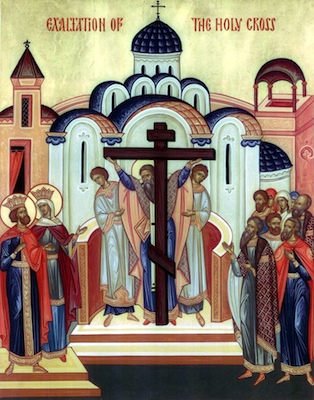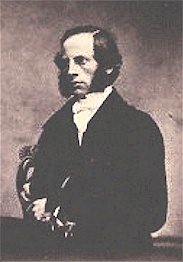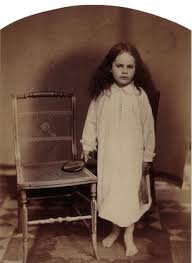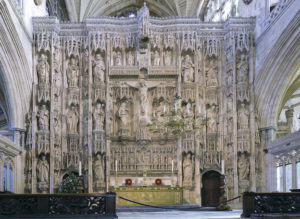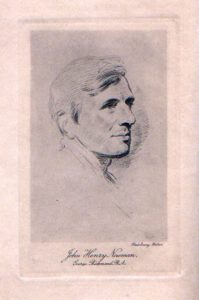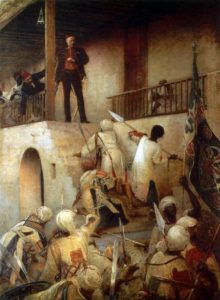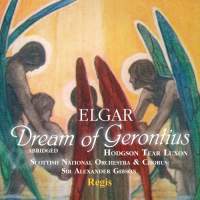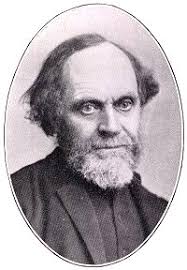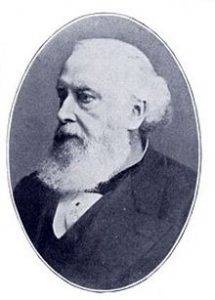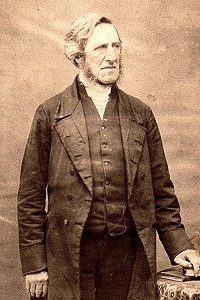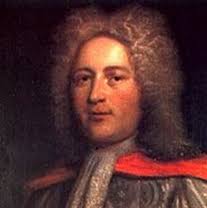Mount Calvary Church
A Roman Catholic Congregation of
The Personal Ordinariate of the Chair of St. Peter
Anglican Use
The Exaltation of the Holy Cross
Patronal Feast of the Church
Prelude
Preludes Liturgiques, No. 7, Gaston Litaize
Hymns
Lift high the cross
Firmly I believe and truly
And now, O Father, mindful of the love
The head that once was crowned with thorns
Anthems
Christus factus est obediens, Felice Anerio
God so loved the world, John Stainer
Postlude
Dialogue, from Premier Livre D’Orgue, Pierre DuMage
______________________________
Lift high the cross was written by George William Kitchen (1827—1912), Dean of the Cathedral for a festival service of the Society for the Propagation of the Gospel, held in Winchester Cathedral in 1887. His version was altered by Anglican priest Michael Robert Newbolt (1874–1956), who later became Canon of Chester Cathedral.
The hymn incorporates an important feature of processionals: the crucifer (cross-bearer) leads the procession, lifting the cross high. This ritual use of the cross is a sign of the victory of the resurrection and finds a biblical basis in John 12:32, “And I, when I be lifted up from the earth, will draw all men to myself”— which is written on the arch above our chancel.
The hymn also alludes to the story of the Emperor Constantine’s vision as told in Eusebius’s Life of Constantine, in which he saw a cross inscribed with the words, “In hoc signo vinces” (“in this sign [of the cross] you will conquer”). Constantine recognized Christianity and provided a basis for the further spread of Christianity.
Lift high the cross, the love of Christ proclaim
till all the world adore his sacred name.1 Come, Christians, follow where our Savior trod,
the Lamb victorious, Christ, the Son of God. [Refrain]2 All newborn servants of the Crucified
bear on their brow the seal of him who died. [Refrain]3 From north and south, from east and west we raise
in growing unison our song of praise. [Refrain]4 O Lord, once lifted on the tree of pain,
draw all the world to seek you once again. [Refrain]5 Let every race and every language tell
of him who saves our lives from death and hell. [Refrain]6 Set up your throne, that earth’s despair may cease
beneath the shadow of its healing peace. [Refrain]7 So shall our song of triumph ever be:
praise to the Crucified for victory! [Refrain]
Her are the St. Michael’s Singers.
George Kitchin
The Very Reverend George William Kitchin, MA, DD, FSA (7 December 1827 – 13 October 1912) was the first Chancellor of the University of Durham, from the institution of the role in 1908 until his death in 1912. He was also the last Dean of Durham to govern the university.
Kitchin was born to a minister in the Rectory at Naughton, Suffolk. He attended King’s College School and King’s College London. Later, he attended Christ Church, Oxford where he took a Double First in Classics and Mathematics in 1850 and gained his Master of Arts (Oxford) (MA Oxon) in 1852. In 1854, Kitchin was an examiner in Mathematics at Christ Church. Kitchin left Oxford to become Headmaster of Twyford Preparatory School in Hampshire but returned to residence at Oxford as Censor in 1861. While at Christ Church he was partly responsible for the end in late 1861 of the Latin Prayer, conducted there since time immemorial, and for which special provision had been given in the Act of Uniformity 1662. Kitchin married in 1863, and served as Oxford’s first Junior Censor of non-collegiate students from 1868 to 1883. He was Select Preacher at Oxford from 1863–64, Whitehall Preacher from 1866–67. Resided at Brantwood, in the Lake District from 1869–71, the property later purchased by John Ruskin. Here he undertook assignments for Clarendon Press, including working on the proofs of Richard Cleasby and Gudbrand Vigfusson’s Icelandic-English Dictionary.
Appointed Chaplain to William Jacobson, Bishop of Chester from 1871–72, tutor of Frederik, Crown Prince of Denmark (later Frederick VIII of Denmark) and lecturer and tutor in History in Christ Church from 1870-83. He was also Commissary to Charles Sandford, Bishop of Gibraltar from 1874–1904, and was an Honorary Fellow of King’s College London, and an honorary student of Christ Church. In theology he was a moderate liberal.
In 1883, he became Dean of Winchester and in 1894 became the Dean of Durham.
Xie: “It won’t come smooth”
At Oxford his friends included John Ruskin and Lewis Carroll. Kitchin’s daughter Alexandra (‘Xie’, 1864–1925) was Carroll’s favorite photographic subject.
While Dean of Winchester he was responsible for a number of refurbishments within the Cathedral, most notably, the restoration of the mediaeval reredos behind the High Altar, usually known as ‘The Great Screen’. The restoration was initially entrusted to the architect J. D. Sedding. However, Sedding’s design for the scheme did not meet with general satisfaction and was not implemented. Thereafter Kitchin personally took over and master-minded the entire project, essentially as his own architect, commissioning the many new statues needed to people the restored screen. When completed this was widely acclaimed as a major artistic ecclesiastical restoration of the 19th century. (Wikipedia)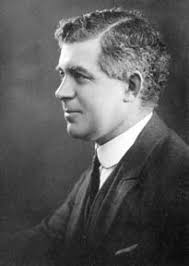
Sir Sydney Nicholson
The tune CRUCIFER was composed by Sir Sydney Hugo Nicholson MVO (9 February 1875 – 30 May 1947) was an English choir director, organist and composer, now chiefly remembered as the founder of the Royal School of Church Music (RSCM). He was born in London (the son of Charles Nicholson) and educated at Rugby School, New College, Oxford and the Royal College of Music. At this last-named institution, he studied the organ. He then served as organist at Barnet Parish Church (1897 – 1903), Carlisle Cathedral (1904), Lower Chapel, Eton College (1904 – 1908), Manchester Cathedral (1908 – 1919), and Westminster Abbey (1919 – 1928).[3] Along with maintaining his organist posts, he edited the Hymns Ancient and Modern supplement that was published in 1916; he did not live to see the 1950 revised edition.
Something momentous would have to occur to persuade most away from playing the organ at the prestigious Westminster Abbey, but such was the case with Nicholson who was so concerned at the sad state of choral music in the parish churches throughout the country that in 1927 he founded the School of English Church Music (now the RSCM), in the hope of rectifying the problem. The School’s members initially met at St Sepulchre-without-Newgate.
One of Nicholson’s most successful compositions for parish choirs was his Communion Service in G, which was widely sung, especially in Anglo-Catholic churches, until recent times. He was warden of St Nicholas College, Chislehurst (1928 – 1939).[4]
In addition to having edited Hymns Ancient and Modern, still the standard hymn book in many Anglican churches today, Nicholson wrote several hymn tunes. Of these, the most famous is Crucifer for the popular processional hymn Lift High the Cross. In 1928 he received the Lambeth DMus, and a decade later he was knighted for his services to Church music. He died at Ashford, Kent at the age of 72, and was buried at Westminster Abbey. (Wikipedia)
____________________
Firmly I believe and truly is adapted from John Henry Newman’s poem The Dream of Gerontius, a narrative poem written in 1865 about the progress of a soul from death to salvation.
As an Evangelical, Newman (1901-1890) rejected the doctrines of purgatory and the intercession of saints, but as part of his conversion (1845), he came to a realization, as he would call it, of the fullness of the communion of saints: those striving on earth, those being purified by the divine fire, and those in heaven moved by love to pray for those on earth and in purgatory. Gerontius (Greek Geron: old man), relates the journey of a pious man’s soul from his deathbed to his judgment before God and settling into Purgatory. As the priests and assistants pray the prayers for the dying Gerontius recites this creed and prays for mercy. “Sanctus Fortis, sanctus Deus” is from the Good Friday liturgy and is alluded to in the line “him the holy, him the strong.”
Firmly I believe and truly
God is Three and God is One;
and I next acknowledge duly
manhood taken by the Son.Refrain: Sanctus fortis, sanctus Deus, de profundis oro Te.
Miserere mei, judex meus, parce mihi, Domine.And I trust and hope most fully
in that manhood crucified;
and each thought and deed unruly
do to death, as he has died.Simply to his grace and wholly
light and life and strength belong,
and I love supremely, solely,
him the holy, him the strong.And I hold in veneration,
for the love of him alone,
Holy Church as his creation,
and her teachings as his own.Adoration ay be given,
with and through the angelic host,
to the God of earth and heaven,
Father, Son, and Holy Ghost.
Here is the hymn at Nashotah House.
General Gordon (1833-1885), troubled by fears of what happens after the end of life, had a copy of the poem sent to him in Egypt in 1884. He read it on his journey to his own death in Khartoum. This copy, with pencilled notes, was later given as a wedding present to Elgar. Elgar set it to music as an Oratorio, premiered in 1900. Its prominent Roman Catholic theology was objectionable to many Anglicans, and Elgar had to change the text to be have the oratorio performed in Church of England cathedrals.
Here is Peter Pears singing Firmly I believe and truly from Elgar’s The Dream of Gerontius.
______________________
And now, O Father, mindful of the love was composed by Anglican High Churchman William Bright (1824—1901), He was Regius Professor of Ecclesiastical History at Oxford, and then worked in Scotland, where his views on the Reformation caused him to be ejected by the Bishop of Glasgow. He then returned to Oxford.
The text it was inspired by the Latin Canon that begins Te Igitur, clementissime Pater:
And now, Lord, we Thy servants,
and with us Thy holy people,
calling to mind
the blessed Passion of the same Christ, Thy Son, our Lord,
and also His Resurrection from the grave
and His glorious Ascension into heaven,
offer to Thy excellent majesty,
of Thy gifts and presents,
a pure Victim, a holy Victim, a spotless Victim,
the holy Bread of eternal life,
and the Chalice of everlasting salvation.
1 And now, O Father, mindful of the love
that bought us, once for all, on Calvary’s tree,
and having with us him that pleads above,
we here present, we here spread forth to thee
that only offering perfect in thine eyes,
the one true, pure, immortal sacrifice.2 Look, Father, look on his anointed face,
and only look on us as found in him;
look not on our misusings of thy grace,
our prayer so languid, and our faith so dim:
for lo, between our sins and their reward
we set the Passion of thy Son our Lord.3 And then for those, our dearest and our best,
by this prevailing presence we appeal:
O fold them closer to thy mercy’s breast,
O do thine utmost for their souls’ true weal;
from tainting mischief keep them white and clear,
and crown thy gifts with strength to persevere.4 And so we come: O draw us to thy feet,
most patient Saviour, who canst love us still;
and by this food, so aweful and so sweet,
deliver us from every touch of ill:
in thine own service make us glad and free,
and grant us never more to part with thee.
Her is the Choir of Marlborough College.
William Bright
William Bright, D.D., born at Doncaster, Dec. 14, 1824, and educated at University College, Oxford, where he graduated B.A. (first class in Lit. Hum.) in 1846, M.A. in 1849. In 1847 he was Johnson’s Theological Scholar: and in 1848 he also obtained the Ellerton Theological Essay prize. He was elected Fellow in 1847, and subsequently became Tutor of his College. Taking Holy Orders in 1848, he was for some time Tutor at Trinity College, Glenalmond; but in 1859 he returned to Oxford, and in 1868 became Regius Professor of Ecclesiastical History and Canon of Christ Church.
William Henry Monk
The tune UNDE ET MEMORES was composed by William Henry Monk. It marks the rhythm very beautifully with a crochet on the third and seventh syllable of lines one and three, varied on the fifth syllable in lines two and four.
Monk (16 March 1823 – 1 March 1889) was an English organist, church musician and music editor who composed popular hymn tunes, including one of the most famous, “Eventide”, used for the hymn “Abide with Me”. He also wrote music for church services and anthems.[1]
Monk was born in London on 16 March 1823. By age 18, Monk was organist at St Peter’s Church, Eaton Square (Central London). He left after two years, and moved on to two more organist posts in London (St. George’s Church, Albemarle Street, and St. Paul’s Church, Portman Square). He spent two years in each.
In 1847, Monk became choirmaster at King’s College London. There he developed an interest in incorporating plainchant into Anglican services, an idea suggested by William Dyce, a King’s College professor with whom Monk had much contact. In 1849, Monk also became organist at King’s College.
In 1852, he became organist and choirmaster at St Matthias’ Church, Stoke Newington, where he made many changes: plainchant was used in singing psalms, and the music performed was more appropriate to the church calendar. By now, Monk was also arranging hymns, as well as writing his own hymn melodies. In 1857, his talents as composer, arranger, and editor were recognized when he was appointed the musical editor of Hymns Ancient and Modern, a volume first published in 1861, containing 273 hymns. After supplements were added (second edition—1875; later additions or supplements—1889, 1904, and 1916) it became one of the best-selling hymn books ever produced. It was for this publication that Monk supplied his famous “Eventide” tune which is mostly used for the hymn “Abide with Me”, as well as several others, including “Gethsemane”, “Ascension”, and “St. Denys”.
In 1874, Monk was appointed professor of vocal studies at King’s College; subsequently he accepted similar posts at two other prestigious London music schools: the first at the National Training School for Music in 1876, and the second at Bedford College in 1878. Monk remained active in composition in his later years, writing not only hymn tunes but also anthems and other works. In 1882 Durham University awarded him an honorary Mus. Doc.
He died on 1 March 1889 and was buried in Highgate Cemetery. (from Wikipedia)
The Head that once was crowned with thorns was written by Thomas Kelly (1769-1854), who based this hymn on Hebrews 2: 9-10 which speaks of Christ’s glory and the universal message of grace that is available because of Christ’s suffering: “But we see Jesus, who was made a little lower than the angels for the suffering of death, crowned with glory and honor; that he by the grace of God should taste death for every man. For it became him, for whom are all things, and by whom are all things, in bringing many sons unto glory, to make the captain of their salvation perfect through sufferings.”
Kelly employs the poetic device of hypotyposis – a vivid description of a scene or events in words – that provides the singer with a glimpse of the splendor of heaven, which is contrasted with the suffering of the cross and the suffering of all who follow Christ on earth.
1 The head that once was crowned with thorns
is crowned with glory now:
a royal diadem adorns
the mighty Victor’s brow.2 The highest place that heaven affords
is his, is his by right,
the King of kings, and Lord of lords,
and heaven’s eternal Light;3 The joy of all who dwell above,
the joy of all below,
to whom he manifests his love,
and grants his name to know.4 To them the cross, with all its shame,
with all its grace, is given:
their name, an everlasting name,
their joy, the joy of heaven.5 They suffer with their Lord below,
they reign with him above;
their profit and their joy to know
the mystery of his love.6 The cross he bore is life and health,
though shame and death to him;
his people’s hope, his people’s wealth,
their everlasting theme.
Here is the Choir of the King’s School.
Thomas Kelly
Son of a judge, Kelly attended Trinity College (BA 1789) and planned to be a lawyer. After converting to Christ, though, his career plans changed to the ministry. He became an Anglican priest in 1792, but eventually became one of the famous dissenting ministers. He wrote over 760 hymns. Miller’s Singers of the Church (1869) says of him:
Mr. Kelly was a man of great and varied learning, skilled in the Oriental tongues, and an excellent Bible critic. He was possessed also of musical talent, and composed and published a work that was received with favour, consisting of music adapted to every form of metre in his hymn-book. Naturally of an amiable disposition and thorough in his Christian piety, Mr. Kelly became the friend of good men, and the advocate of every worthy, benevolent, and religious cause. He was admired alike for his zeal and his humility; and his liberality found ample scope in Ireland, especially during the year of famine.
Jeremiah Clarke
The tune ST MAGNUS first appeared in Henry Playford’s Divine Companion (1707 ed.) as an anonymous tune with soprano and bass parts. The tune was later credited to Jeremiah Clark (b. London, England, c. 1670; d. London, 1707), who was a chorister in the Chapel Royal and sang at the coronation of James II in 1685. Later he served as organist in Winchester College, St. Paul’s Cathedral, and the Chapel Royal. He shot himself to death in a fit of depression, apparently because of an unhappy romance. Supported by Queen Anne, Clark was a prominent composer in his day, writing songs for the stage as well as anthems, psalm tunes, and harpsichord works.
Although ST. MAGNUS was originally used as a setting for Psalm 117, it has been associated with this text since they were combined in the 1868 Appendix to Hymns Ancient and Modern. The tune is named for the Church of St. Magnus the Martyr, built by Christopher Wren in 1676 on Lower Thames Street near the old London Bridge, England.
ST. MAGNUS consists of two long lines, each of which has its own sense of climax. The octave leap in the final phrase has a stunning effect, like a vault in a Gothic cathedral. Assign stanzas for antiphonal singing in unison and/ or in harmony, (Hymnary)
